The best water for aquarium use should be clean and contain as little contaminants as possible, right?

Using distilled water for your aquarium seems like a good choice because it’s so pure and therefore, perhaps, safer.
It turns out, however, that fish need more than just pure H2O molecules. So if the water is being purified by distillation does that mean you can’t at all use it in your fish tank?
Are purified and distilled water even the same thing?
Distillation is the process of water being boiled, turned into steam, and then cooled down to become liquid again.
What this achieves is all dissolved solids in the impure water are left behind after the evaporation.
The result is (almost) nothing but pure H2O.
Distilled water has the lowest TDS (Total Dissolved Solids) from all types of water. Total Dissolved Solids is the number of ions, metals, minerals, and salts dissolved in a liquid.
As you can probably guess TDS is measured in ppm (parts per million) and after high-quality distillation, it will drop to 0.
Is distilled water suitable for aquariums?
Using distilled water in a fish tank can be justified under the following circumstances:
Pure distilled water is only good for topping off an aquarium losing water due to evaporation. This type of water has 0 Total Dissolved Solids (TDS) which makes it the softest possible. Water with no TDS is harmful to fish since it sucks the minerals out of their body through osmotic pressure.
Following these thoughts, distilled water can be used for reducing the hardness of tap water used in a fish tank.
By mixing such soft water with hard water you can bring down the total hardness of the end product.
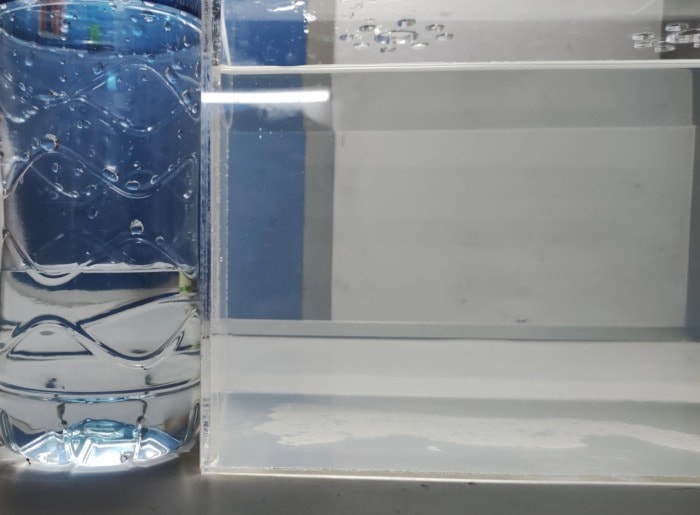
by Sherman_l
Anyway, this type of water has virtually no minerals in it, which makes it harmful to aquatic life. Minerals are necessary for fish and plants and will also act as a buffer for pH.
However, with proper remineralization distilled water becomes one of the best options for a healthy aquarium. Remineralization is the process of adding essential minerals back into any water that’s being purified.
That being said, in small tanks and bowls using pure distilled water can be fatal to fish as it will significantly impact pH levels.
Let’s explain that in a little more detail.
When NOT to use distilled water in your fish tank?
You should not use pure distilled water for water changes in your fish tank. The reason for that is the distilled water’s lack of minerals.
When I say minerals I mean mainly magnesium, calcium, and iron among many others.
Fish need water that’s rich in these vital elements for optimal health.
Fish and aquatic plants alike use minerals in the water, where humans can get all they need from food.
Not only that, but minerals will regulate and STABILIZE the pH levels in the water.
This is important because even the slightest pH swing can be fatal to fish.
Years of experience have taught me that the key element here is not the value of the pH number but, rather, its stability.
My fish would adapt to a gradual change of the pH, but a fluctuating one would almost always turn out lethal to them.
Distilled water in its nature has around 7 pH, which makes it slightly acidic.
However, without stabilization, this number will be very unstable as almost every factor that impacts it will force violent fluctuations.
Even carbon absorbed from the air will lower the pH of this type of water just a couple of hours after the distillation.
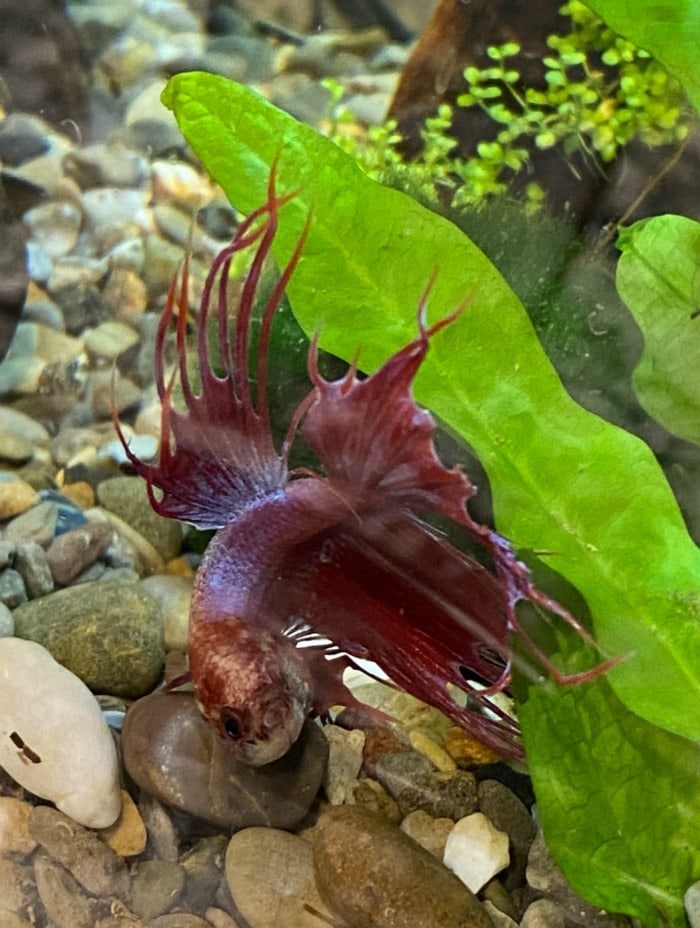
by squidisokay
Another reason using pure distilled water for your aquarium is a bad idea is because of its neurological effect on fish.
Many animals use charged particles (ions) from salts for transmitting signals through the nervous system.
When you put a fish in pure distilled or purified water the salts in its body and bloodstream will quickly dissolve in the water, rendering its nervous system seriously damaged.
No betta, goldfish, or any other fish species is immune to this effect.
I know this all sounds discouraging and I’m assuming you’re interested in the subject because you’re trying to find a good alternative to your awful tap water.
Sometimes conditioned tap water can be all your aquarium needs, but often its low quality is the reason behind algae growth or simply our fish like it softer. Worry not.
How to make distilled water safe for fish?

In order to make distilled water safe for fish, you’ll first need to remineralize it.
The best way to remineralize distilled water is to treat it with a combo of a mineral supplement and an alkaline buffer.
Simply using a mineral supplement won’t be enough, since it would have no effect on carbonate hardness (KH).
And since carbonate hardness helps water maintain a stable pH you’ll have to use an alkaline buffer to raise it and keep your pets healthy.
The combination I’ve had best results with is Seachem’s Equilibrium and their Alkaline Buffer, but you can use any other commercial remineralizer. Additionally, you can also raise your water’s KH with baking soda instead.
Depending on your setup and the fish species you keep, you’ll have to increase your aquarium’s mineral content to a level of between 70 – 210 ppm, while the carbonate hardness should be around 4 – 8 dKH.
Here’s a chart showing the degrees of aquarium water hardness measured in ppm and dGH:
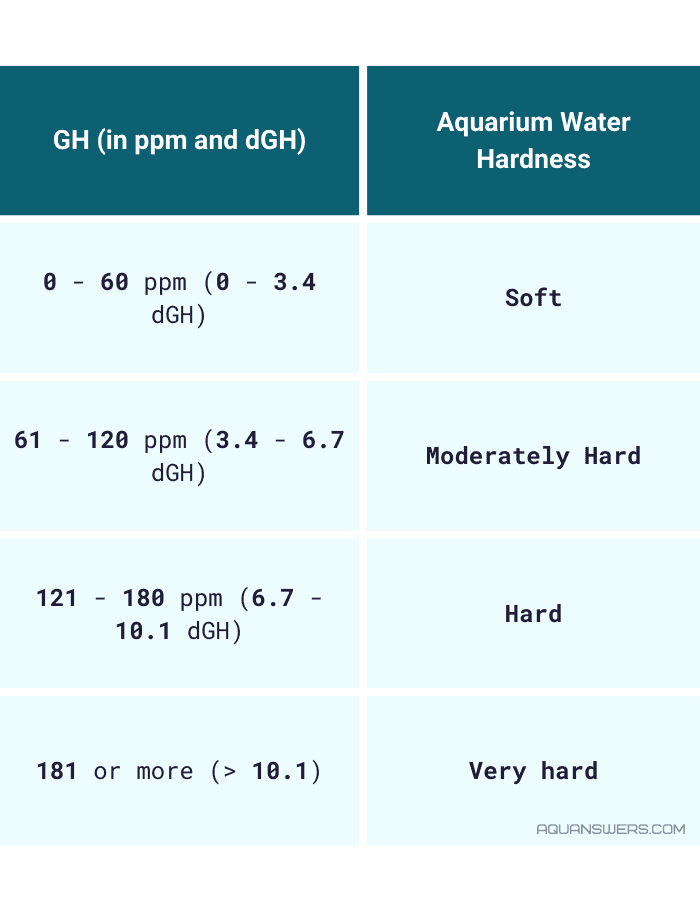
For the curious: the conversion between PPM and dGH (degrees of General Hardness) is done by dividing the ppm values by 17.9 and vice versa. Needless to say, you should remineralize distilled water and measure its hardness with a test kit, before you add it to your tank.
When can you use distilled water in your aquarium?
You can use distilled water in your fish tank for:
- Topping off evaporation water losses. The reason you can top off your tank with pure distilled water is that you do not break the mineral balance of your fish tank this way.
Whatever water has evaporated did not take any minerals with it.
They remain where they belong – in your aquarium. - Water changes but after remineralization. This is the only way you can make distilled water safe for your fish.
For one reason or another, I’ve had to use distilled water in my fish tanks.
However, I knew I could only use it instead of tap water if I properly remineralized it.
I would add the good minerals back while having the benefit of staying away from everything harmful in my tap water.
Remineralized distilled water is one of the best water choices for your aquarium.
- To lower the hardness of your tap water. Mixing a gallon of tap water with a gH of 20 with a gallon of distilled water will leave you with 10 gH water.
It’s a misconception that you can use it to proportionally lower the pH of your tap water, however. See, pH changes on a logarithmic scale.
This means that diluting 1 gallon of tap water with a gallon of distilled water will not halve the pH value of your end product.
What works best here is testing for yourself.
Carbon hardness (kH) or alkalinity should be taken into consideration as well.
KH levels of 2.5 to 3 will prevent any violent fluctuations in the pH and it may even keep it at the same value. So if your tap water has a kH of 3, diluting it with distilled water will likely result in a rather stable pH and a halved hardness.
Difference between all types of water and which one will work best in your aquarium

by tiny_galaxies
It’s important to understand how every type of water is defined as it will improve your judgment when it comes to which one you want to use in your aquarium.
Let me clarify what’s the differences between them:
- Distilled water – This is water that has gone through a distillation process and aims to achieve 0 ppm of Total Dissolved Solids.
It is usually at 7 pH, it’s unstable by nature and it has no minerals in it.
Although the distillation may guarantee 0 ppm of TDS some volatile organic compounds and other volatile solvents with a low boiling point (such as benzene) will evaporate along with the H2O molecules.
This means distilled-only water does not guarantee a lack of contaminants, yet it remains one of the purest types of water.
It is also the softest one and is dechlorinated by definition.
- Reverse Osmosis (RO) water – this is a type of water that has been filtered by a semipermeable membrane and other filters, which remove 90% to 99% of the impurities in it.
This, again, includes all minerals.
Osmosis is the process in which any solvent moves through the membrane in a direction that tends to equalize the concentration of the solutes on both sides.
This happens because of the osmotic pressure.
In reverse osmosis, there’s an outside pressure applied that overcomes the osmotic pressure and therefore the solvent (in this case the water) moves across the membrane in the opposite direction, winding up on the pressurized side of the membrane.
The selective membrane traps larger molecules (bacteria included) on the other side of the membrane while allowing the smaller H2O molecules to pass.
In short, the impurities are too large to enter through the membrane thus the water is purified.
This method of purification is very cost-effective compared to distillation and can be done home.
- De-ionized (DI) water – Special resins capture positively and negatively charged ions from the water.
The advantage of de-ionized water is that it removes anions like Chlorides and Nitrates completely, unlike RO or distillation.
Usually, this method is applied along with RO in premade purification units.
These units have carbon block filters that remove chlorine.
Unfortunately, they cannot remove chloramine effectively, unless there’s a special separate carbon cartridge, which newer models often have.
Author’s note: Chloramine and chlorine actually leave water naturally if left for a certain amount of time. However, the evaporation takes too long for it to be viable for any fish keeping purposes.
- Purified water – this is any water that has gone under some sort of purification (all aforementioned, included).
For any water to be classified as purified it needs to have no more than 10 ppm of TDS.
This is more of a quality classification.
- Mineral water – Bottled mineral water, by definition, should contain over 250 ppm of TDS of trace minerals.
It may originate from an underground source.
It’s usually an RO/DI purified water that has been additionally remineralized.
- Spring water – The only requirement for this type of water is that it originates from an underground source around soil and rock beds.
It may or may not be rich in minerals and as every spring is different, the TDS of trace minerals will greatly vary.
Have a look at which water would best fit the needs of an aquarium:
Using RO/DI water for aquariums
Everything that applies to the distilled water applies here as well, meaning it will need remineralization.
Reverse osmosis and deionized water are very good choices for both freshwater and saltwater users. In fact, saltwater aquarists use them to prepare saltwater for their fish all the time, as marine life is VERY sensitive to impurities in our tap water.
This type of water is also a good base for making brackish aquarium water (a semi-saline type of water).
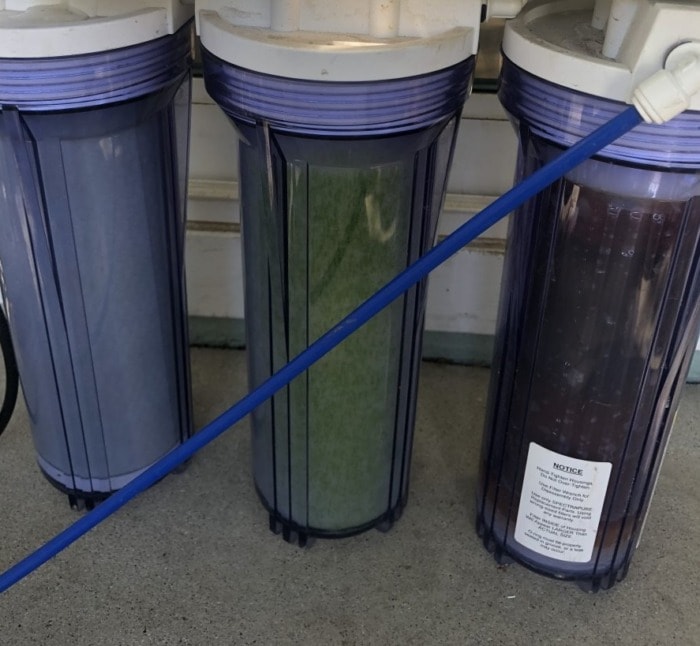
by rrocky
“Why don’t these aquarist use distilled water then?” you may ask.
Well, the truth is they can.
But most companies won’t state how exactly they distill their water and often copper pipes are being used.
Copper is a big no-no for marine life.
Therefore if you want to be sure what you’re putting in your fish tank you’d just need to distill the water on your own.
This, however, may come in costly. A smart practice is to just get a reliable RO/DI water filtration unit.
The one I linked to falls on the inexpensive side, but I know for a fact is a solid choice.
I know a couple of guys that own it and swear by it and I’ve also used it.
Anyway, your RO/DI unit WILL pay for itself in time because it will save you tons of headaches and anxiety about your fish.
This is especially true for saltwater reef tanks, where fish are super fragile and expensive.
I also have a detailed guide that illustrates a couple of the best RO DI systems that could purify the water for reef tanks. A good reason to switch to remineralized RO/DI water is wanting to control algae growth in your tank (link to the extensive guide I wrote) by limiting phosphate levels in your tap.
Using purified water for fish tanks
You can use any purified water in your fish tank as long as you adapt it to the needs of the aquatic life inside.
As stated above “purified” only means that the water went through whatever purifying processes and that it has no more than 10 TDS.
This implies that adding the minerals back and buffering the pH is a must to make it safe for your fish.
Using mineral water for aquariums
The million cents question.
Can you put bottled water in a fish tank and what will the aftermath be?
Coincidentally, mineral water is among your best choices for use in a freshwater aquarium with hard water-loving fish because everything is done for you.
Companies will filter their product by RO/DI and add minerals afterward. Bear in mind you’d still have to test the brands and check if the levels of trace minerals are right for your fish.
Also, mineral water may be treated with chlorine or chloramine so it’s a good idea to condition it before adding it to your aquarium.
Mineral water may be a little more expensive as it is mainly imported from Europe.
Using spring water for aquariums
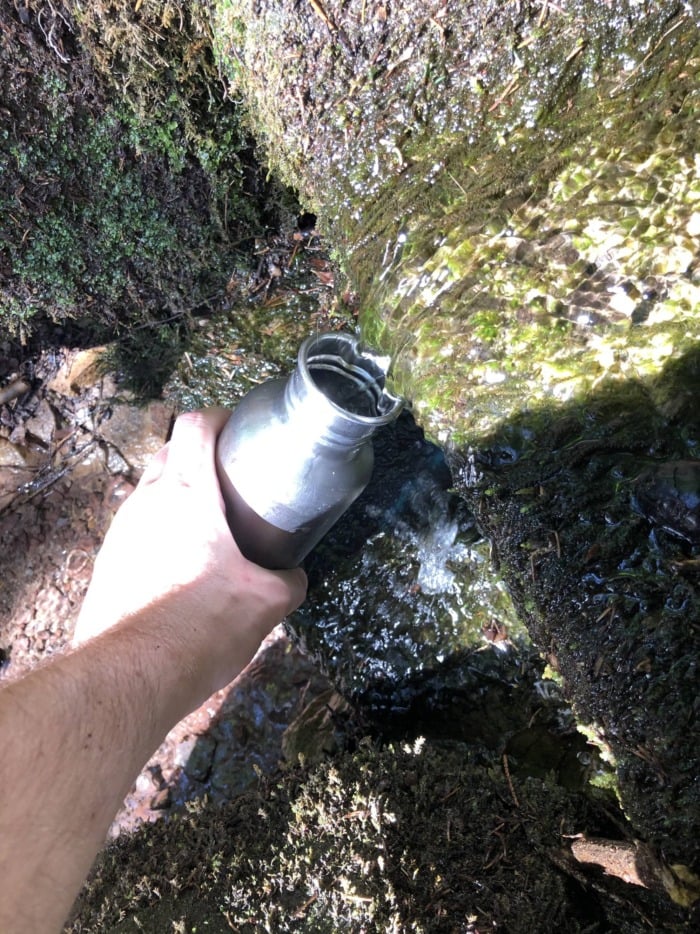
by 1337Poesn
From spring water to spring water there’s a huge difference.
It all depends on the location and origins of these waters so trace minerals will vary greatly, although they will generally be in higher amounts. My advice here is that the trial and error method will be most productive for finding out whether spring water will work for your fish.
My Conclusion
Distilled water can be a great alternative to tap water whether you’re using it to top off your tank or reduce the GH of tap water.
It can also be used to substitute tap water entirely, as long as it gets remineralized beforehand.
Just keep in mind that if you’re going to use it, it would be best to distill it yourself since commercially sold distilled water may contain trace amounts of copper.



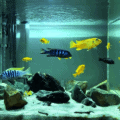




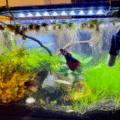
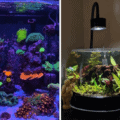

I took a sample of aquarium water into Petco and the fish person told me I had too much hard water and salt in my tank. She said to drain out half the water and replace it with distilled water. Then in 4 days, repeat that process. Now I read that you say distilled water is bad for my fish . So do I drain half the water and replace it with soft water from my tap? I hadn’t used tap water because it contained salt and other chemicals to convert my hard water to soft water.
For future changes, do I use 1/2 distilled water , plus 1/2 soft tap water? Initially, I changed the water because the water became very cloudy and you couldn’t see the fish.
Thank you for your help!
.
Hello Marsha,
You need to get a test kit and measure the water hardness on your own. Without actual numbers, we can’t be sure you need to soften the water. Distilled water is ok if used to soften hard water. Having your fish in 100% distilled water is what’s bad. You’ll need to do some research on the appropriate water hardness for the species of fish that you keep. Acquire a water test kit (the API brand is decent) and measure how hard your aquarium water is. From then on, read on how to properly soften the water to bring it down to the desirable conditions.
P.S. – The water cloudiness is from bacteria and is a normal process in a new fish tank. I have an article about cloudy aquarium water, which you can check out by looking it up in the search bar of Aquanswers.
Hope this helps.
Best,
Momchil
You can use distilled water in the aquarium in a number of situations: First, when the water in the tank evaporates, the minerals will stay. You can increase the amount of water by replacing the evaporated water with distilled water. You can also use distilled water to lower the pH in the tank. This also reduces the carbon hardness of the water. Additionally, when the distilled water is remineralized, you can use distilled water to replace all the water in the aquarium.
Hi Momchil. This is a great article, many thanks. I only have small freshwater aquariums (two of 30l) which I have had for well over a year, but still feel I’m a novice to some extent. All is fine with those but my constant issue has always been my tap nitrate level (24ppm) which, with a small tank, forces regular 1/3rd water changes to keep on top of nitrates and to reduce impact to my fish. I don’t really want to reduce water changes amount/frequency, but to get the nitrate levels constantly lower(ish). I have recently purchased a small DI to help reduce (almost eliminate) nitrates. But clearly this removes minerals and lowers my pH. I want to target about pH 7.5 for the two tanks and have minerals to support plants. I seem to be going round in circles (and dead-end paths) on the internet to establish what I should be using to get my water back to suitable parameters for use for my reg water changes (less about evaporation). I would like to opt for an ‘out of bottle(s)’ solution to getting my ID water suitable for use. What should I do/use? Thanks for any advice you have, M.
I added distilled water as per the instructions on another site to reduce a nitrate and learned it was bad from another keeper after the fact and absolutely panicked looking for info on how to fix the problem. Thank you for helping me save my fish!
So I have a whole-house water filtration system. My LFS said they’d never seen tap water this pure (and it better be for what I paid for the system!) I’m struggling because I can’t get my new tank to cycle, so I thought, is my water too pure? It didn’t occur to me until now, but this article seems to confirm my suspicion.
Hi,
Yes this could be it. Tap water contains traces of organics and also nitrifying bacteria, which eventually will start cycling the tank, even without added ammonia.
lower levels of minerals are harmful also for us btw,it causes bones to weaken etc etc,so make sure your expensive system makes your the minerals are kept !I enjoyed reading,but spend a lot of time finding out what TDS means(and no,Trump derangement syndrom is the wrong answer : )
Thanks for the feedback Martin!
I’ll add a short definition of TDS to the article right away.
Also, yes, it is true that demineralized (purified) water is not helpful in any way when used for drinking. However, it should be noticed that humans get their minerals from their food, and water is not really an essential source of that to us.
Purified water is great for dissolving things though. That’s exactly because it has close to 0 TDS (total dissolved solids). Read, it’s perfect for cooking, coffee, eat, etc.
Regards, and thanks again for your feedback!!!
Hi,
How much magnesium sulfate, calcium chloride and baking soda would you add to 1 liter of distilled water to properly remineralise it?
Thank you
Get a water test kit & experiment. Not all distilled water is equal, and even your air can affect it.
Best to use distilled or reverse osmosis water mixed with tap water, or treated well water (well water can contain bacteria, parasites, and whatnot).